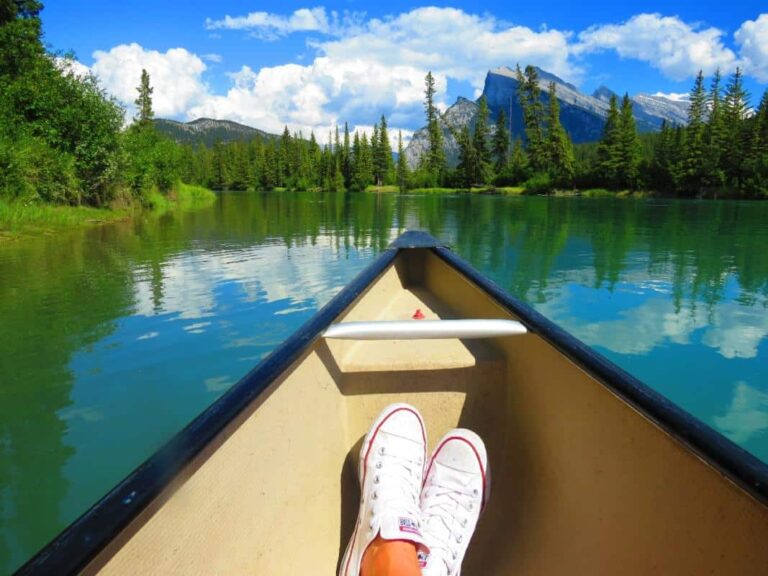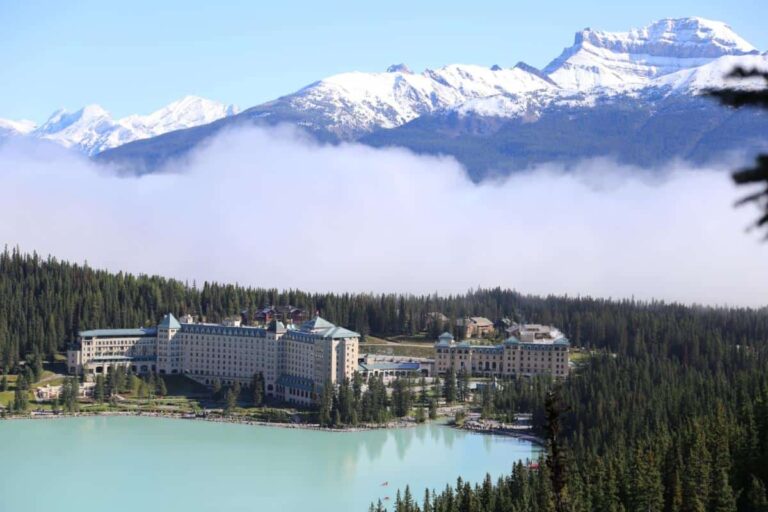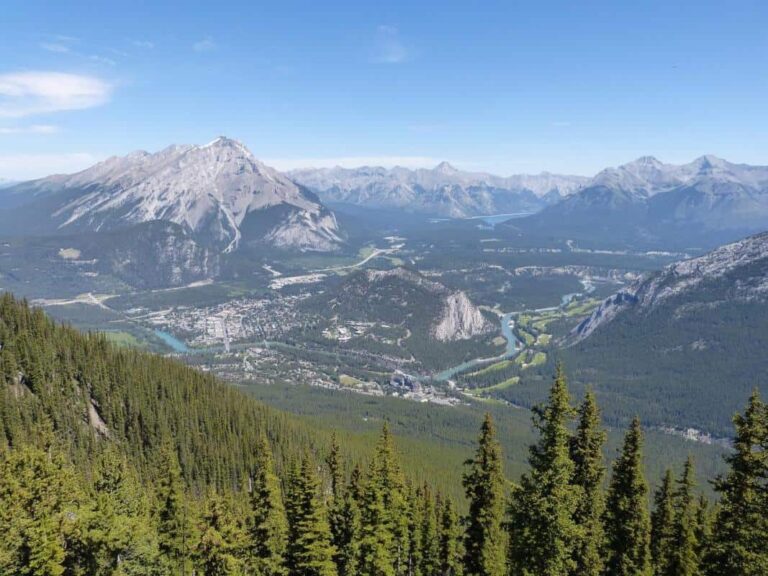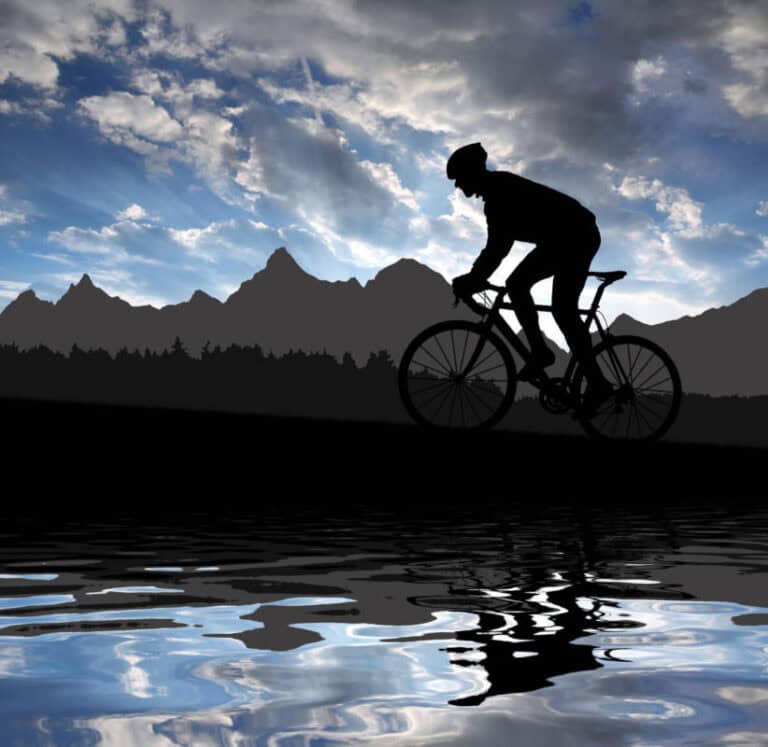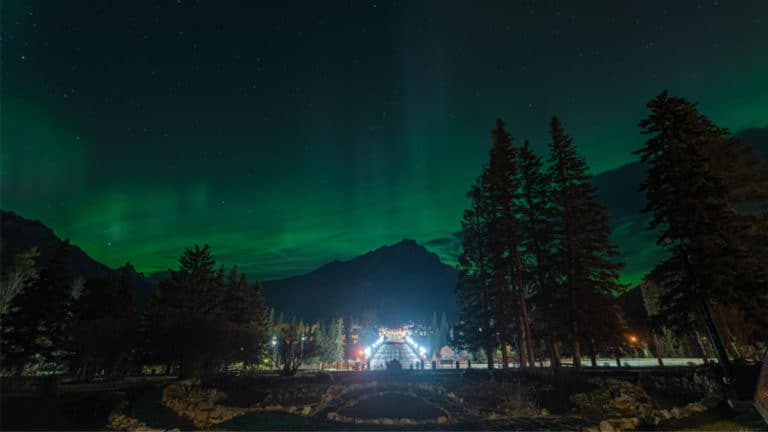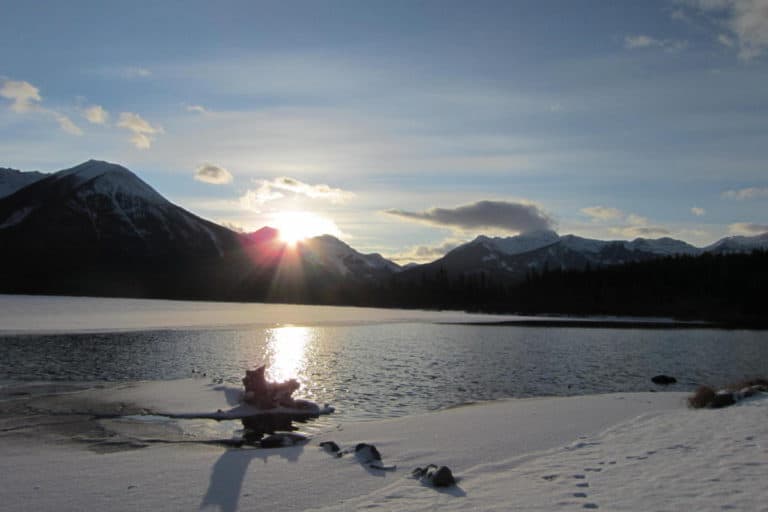Driving through Banff National Park: Insider Touring Tips (2025)
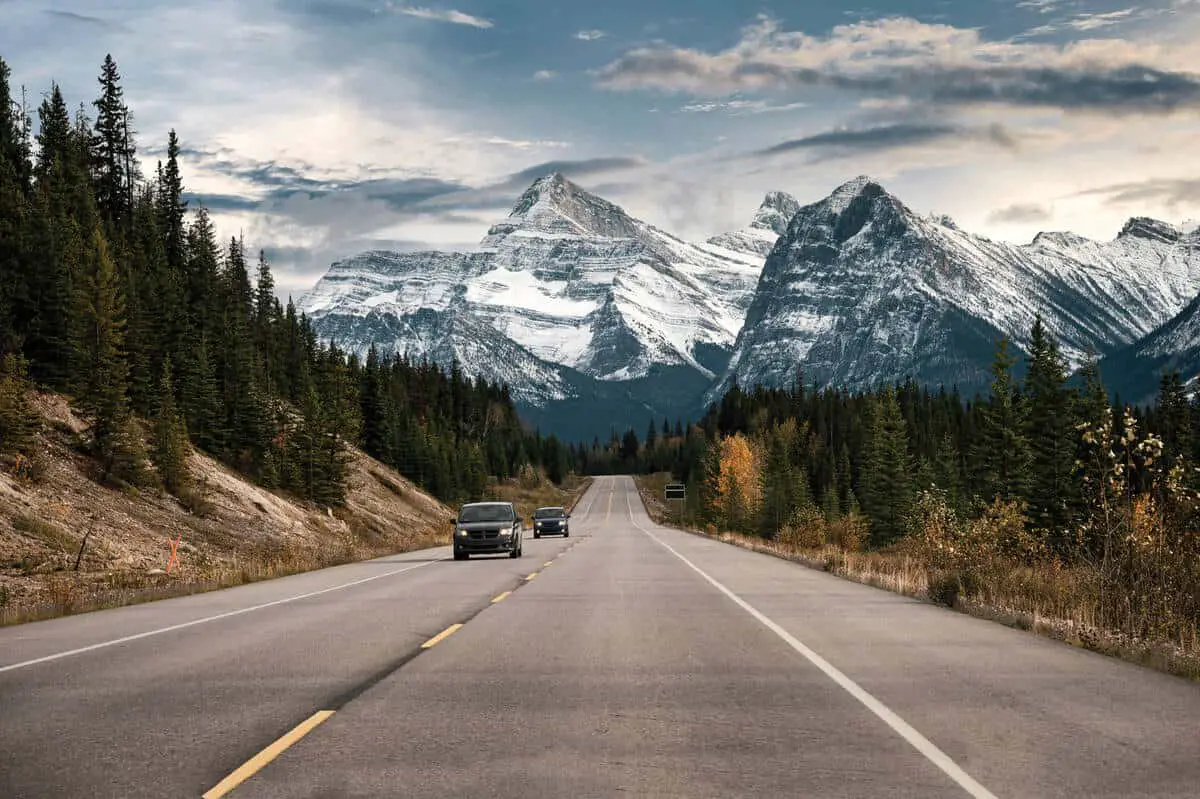
Gonna drive through Banff National Park? In this article, you’ll find everything you need to know, whether you’re just passing through or exploring the park by car.
As you drive through the park, get ready for some breathtaking sights. Driving in Banff National Park is suitable during summer and winter, with well-maintained roads providing easy access to spectacular vistas. And with several scenic drives, there’s no limit to the stunning landscapes you can admire.
Before hitting the road, though, it’s essential to be prepared for the ever-changing weather and road conditions this mountainous region is known for. So dress in layers, carry sufficient supplies and refer to an up-to-date map or GPS guide to get the most out of your journey.
Alright, let’s dive in and find out what driving through Banff National Park entails!
Essential Preparations for Driving Through Banff National Park
Before you hit the road, let’s go over some essential preparations to make your trip as smooth as possible.
Vehicle Requirements
First things first. You need to make sure your vehicle is in tip-top shape. So check your tires, brakes, and fluid levels.
If renting an RV, ensure it’s adequately equipped for the park. So stock up, fill up, and replenish your RV’s water tank.
Some tips for RV drivers in Banff National Park include using transit and shuttles to explore the park so you can spend more time exploring and sightseeing. Also, remember to park your RV at designated RV lots or at your campsite.
Seasonal Considerations
Banff National Park can get pretty busy from mid-June until mid-October, especially on weekends and statutory holidays. So, plan ahead and expect congestion, traffic restrictions, and limited parking during those busy times.
It’s also a good idea to head out before 8 am or after 6 pm if you’re driving through the Banff or Lake Louise townsites to avoid the traffic. Additionally, bookmark BanffParking.ca and consult 511 Alberta for current road reports.
ALSO READ: Parking in Banff National Park
As for the weather, it can change quickly in the mountains, so it’s best to be prepared. Pack extra layers and check the forecast before starting your adventure.

How Long Does it Take to Drive Through Banff National Park?
Planning to drive through the stunning Banff National Park is always a good idea, as you’ll absolutely love every twist and turn. But how long it’ll take you to drive through the park?
First off, if you’re in a bit of a hurry, the fastest route is the Trans-Canada Highway. This will take you through the park in the most efficient way possible.
If you’re not in a rush and want to enjoy an adventurous and scenic drive, take the Bow Valley Parkway. This route runs parallel to the Trans-Canada Highway for about 48 kilometers (29.9 mi) between Banff and Lake Louise.
While on the Bow Valley Parkway, keep your eyes open for wildlife sightings. It’s a popular spot for that. Remember that it could take longer to drive this route due to speed limits and the possibility of stopping to admire the views.
Now, if you decide to visit Lake Louise and Moraine Lake, it’s not so easy. Parking at Lake Louise is limited, and you’ll probably need to book a shuttle bus unless you’re prepared to get up early and arrive at the lake BEFORE 7am.
As for Moraine Lake, the road to the lake has been closed since 2023 to most vehicles, so you’ll need to book a shuttle to get there.
In short, you’ll want to spend extra time exploring the Lake Louise and Moraine Lake area.
ALSO READ: Guide to Lake Louise and Guide to Moraine Lake
Are There Gas Stations Within Banff National Park?
While driving through Banff National Park, you need not worry about fueling up because the park has several gas stations. Just keep in mind that they might not be as frequent as you’d expect, so you might want to plan ahead.
You’ll find three gas stations in the town of Banff and two in Lake Louise. These stations offer regular, midgrade, and premium gas options.
However, finding a gas station can be a bit trickier when driving along some of the more remote parts of Banff National Park, like the Icefields Parkway (Highway 93N).
There’s only one gas station along this scenic road, which you’ll find about halfway through the route. So, it’s a smart move to plan your fuel stops accordingly.
Also read: Guide to Gas Stations in Banff National Park
In case you’re driving an EV, you’ll need to charge it in Banff or Lake Louise. There are only two (!) EV charging stations outside these towns. One is at Sunshine Village Ski Resort, but it’s very close to the town of Banff, so it’s not very useful.
The other is along the Icefields Parkway at the Saskatchewan River Crossing. The Crossing Gas Station and Store has three EV charging stations.
ALSO READ: Banff by Electric Vehicle
Do I Have to Pay to Drive Through Banff National Park?
The good news: not necessarily. You do not need a park pass if you only drive through Banff National Park via the Trans-Canada Highway.
But there’s a catch. You’ll need a park pass if you plan to stop and check out any scenic spots or hiking trails during your drive through the park.
Now, if you decide to take the scenic drives on the Icefields Parkway (93) or Bow Valley Parkway (1A) – which, by the way, are absolutely breathtaking – then a pass is indeed required. So, it all depends on your chosen route and whether you want to make stops along the way.
If you go for the park pass, you have two options – the Discovery Pass and the Day Pass. The Discovery Pass is valid for a year, while the Day Pass gives you access for one day, from entry until 4 pm the next day.
You can easily purchase your park pass online, at the park gates if you drive to the park, or in person at the Visitor Center in Banff and Lake Louise.

Are there Restrooms along the way in Banff?
While cruising through Banff National Park’s stunning landscapes, you won’t have to worry about finding washrooms because the most significant attractions have got you covered.
When you’re stopping by the towns of Banff and Lake Louise Village, you’ll find some parking options that’ll make it easier for you to visit those facilities. Keep in mind, though, that some shops and restaurants might not have the best wheelchair access, but overall, the park’s got your back when nature calls.
As you hit the road, you’ll encounter several scenic drives like the Bow Valley Parkway, which connects Banff to Lake Louise. Even on this drive, you’ll find pullouts and picnic facilities with toilets (outhouses).
The same goes for the Icefields Parkway. Several stops have toilets (mostly outhouse facilities without water), like Herbert Lake, Peyto Lake, the Crossing Gas Station and Store at the Saskatchewan River Crossing and the Athabasca Falls.
Closer to the town of Banff, you’ll find restrooms at Lake Minnewanka and nearby Two Jack Lake (drop toilets).
Suggested Stops Along the Way in Banff National Park
Lake Minnewanka
As you drive through Banff National Park on the Trans-Canada Highway, take a short detour to Lake Minnewanka. This beautiful lake offers incredible views, picnic areas, and even boating opportunities.
Don’t forget to check out the remains of the nearby deserted mining town Bankhead, just off the Lake Minnewanka Scenic Drive. You might as well enjoy this entire 14.5-kilometer (9 mi) Scenic Loop connecting to Banff Avenue.
Town of Banff
Your next stop should be the picturesque Town of Banff. This charming mountain town is filled with shops, restaurants, and art galleries that showcase local artists. Stroll down Banff Avenue, the main street, and soak in the vibrant atmosphere.
Morant’s Curve

A must-see in Banff National Park is Morant’s Curve, a famous viewpoint named after the railway photographer Nicholas Morant. Located off the Bow Valley Parkway, this breathtaking spot rewards you with spectacular vistas of the surrounding mountains and the winding railway track. Keep your camera handy!
Lake Louise Village
Continuing your journey, make a stop at Lake Louise Village. Nestled in the heart of Banff National Park, this quaint village perfectly balances stunning scenic views and modern amenities. Don’t miss the iconic turquoise-blue waters of Lake Louise nearby – a perfect spot for unforgettable photos!
Bow Lake
Another picturesque spot to visit is Bow Lake. Within a short drive from Lake Louise, this beautiful alpine lake along the Icefields Parkway offers spectacular views and hiking trails. Relax by the water’s edge or leisurely walk along the shoreline.
Peyto Lake
You’ll stumble across Peyto Lake along the scenic Icefields Parkway – a must-see destination in Banff National Park. Known for its intense turquoise color, this glacier-fed lake offers fantastic photo opportunities and short hikes to nearby lookout points. It’s just off the Icefields Parkway, so not much of a detour at all.
Saskatchewan River Crossing
Stop by the Saskatchewan River Crossing, a historic intersection of the Icefields Parkway and the David Thompson Highway. This spot is the perfect place to rest, refuel, and enjoy stunning views of the surrounding mountain ranges and the North Saskatchewan River. There is a shop, a cafe for lunch, and a gas station to fill up your car.
Athabasca Falls
Last but not least, be sure to visit Athabasca Falls. A powerful and picturesque waterfall that plunges into a deep canyon. The falls are easily accessible via a short walking trail. You won’t fail to snap some beautiful pics here!
Are Those Main Throughways the Only Roads I Can Take Through Banff?
The Trans-Canada Highway is not the only main road to get you around Banff National Park. A few terrific alternatives offer you an even more chill and scenic experience.
The Bow Valley Parkway is one of ’em – this 48-kilometer (30 mi) secondary highway takes you from Banff to Lake Louise, and the best part is it was made just for sightseeing.
So it’s your go-to if you’re up for a more leisurely pace. It runs parallel to the Trans-Canada Highway (Hwy. 1) and gives you a relaxed vibe as you take in the gorgeous surroundings. Just don’t forget to have your camera ready – you wouldn’t wanna miss capturing those breathtaking views!
Also, get ready for some great pullouts and hiking opportunities on your way.
While exploring Banff, remember that a vehicle pass is required for entrance if you want to stop and leave your car.

Can I Drive Through Banff National Park at Night?
Yup, you can drive through Banff National Park at night. Just be prepared for a different experience compared to daytime driving, as you’ll obviously see less of the stunning landscapes and may have to navigate darker roads. But as long as you drive responsibly, it’s a safe and enjoyable way to explore the park after the sun goes down.
However, there’s a catch: When driving at night, you need to be extra cautious of wildlife on the roads. Banff National Park is home to all kinds of big and small animals that may wander onto the roads after dark. In fact, you’re much more likely to do so than on the much busier roads of daytime Banff.
So keep an eye out and follow the speed limits to stay safe and protect the park’s wildlife. It’s also a good idea to ensure your vehicle’s headlights are in good working order so you can clearly see the road ahead.
Another thing to consider when driving through Banff National Park at night is the limited visibility of scenic views. You won’t be able to fully enjoy the park’s beauty when the sun isn’t shining, so consider planning your trip with daylight hours in mind for sightseeing and taking in the scenery.
Oh, and don’t forget to fuel up before you hit the road, as gas stations might have limited operating hours in and around the park. Be prepared with a full tank and snacks to keep your energy levels up.
How Big Are the Distances between the Park Gates in Banff?
Knowing the distances between the park gates is essential if you plan a road trip through Banff National Park. It helps you plan your itinerary, better manage your time and have a more carefree experience exploring the park.
When coming from Calgary, you’ll first hit the East Gate of Banff National Park, 128 kilometers (82 mi) east of Calgary City and the Calgary International Airport. This airport is closest to Banff National Park and a popular starting point.
If you plan on heading towards Jasper National Park through the Icefields Parkway, you’ll eventually come across the Icefields Parkway Gates. These are accessible with your Parks Canada Pass.
If you don’t have one, get one or you won’t be able to access this scenic highway to Jasper.
When driving from the west side, such as from Vancouver, it’s around 900 kilometers to reach Banff. You won’t see a gate entering Banff National Park from the west side.
You can obtain a parking pass at the Visitor Centre in Field in Yoho National Park. From there, it’s only 16 more kilometers (10 mi) to Banff’s park border.
If you are planning to visit Banff National Park and Waterton National Park, there is a gate between these two parks as well.

Where to Stop for a Picnic along the Way in Banff?
Banff National Park offers some fantastic spots to stop for a picnic while enjoying the breathtaking views. Check out a few places to relax and enjoy a meal.
First up is Lake Minnewanka. This large lake near the town of Banff has several picnic tables at the Minnewanka Day-Use Area. Arrive early to avoid disappointment.
If all the tables are taken, there are several other picnic spots along the Minnewanka Scenic Road, including the Upper Bankhead picnic area with about twenty (!) tables and even a shelter with a picnic table inside.
You can also visit the nearby Johnson Lake picnic area with sixteen tables and the Two Jack Lake picnic area.
Then there’s also the Bow Valley Parkway. This 48-kilometer stretch connects Banff to Lake Louise and is perfect for sightseeing. With its numerous roadside pullouts, picnic areas, and scenic viewpoints, you will surely find the ideal spot to lay down your picnic blanket.
Will I Have Cellphone Service Throughout My Drive in Banff National Park?
Cellphone service in Banff National Park varies widely, depending on your location in the park.
In the town of Banff, you shouldn’t have any trouble getting good cellphone coverage. However, the signal can get a bit spotty as you venture further into the park, especially on the Icefields Parkway from Lake Louise to Jasper. There’s a large area with no cell service due to no cell towers, so be prepared.
What about if you’re on a Verizon plan? Well, Verizon phones should work within the parks, although the coverage may vary depending on the specific area. Overall, it should work just the same as cell phones from other providers.
Can I Drive to the Banff Upper Hot Springs?
Yes, you can definitely drive to Banff Upper Hot Springs. But keep in mind that parking can be limited, especially during peak season. When planning your visit to these relaxing hot springs, consider these three tips:
- Be prepared to arrive early or wait for a parking spot, as it’s popular for travelers. Don’t get discouraged if you don’t find a spot right away; just be patient and circle back if needed.
- If you’re hesitant about dealing with limited parking, think about alternative modes of transportation. In summer, a free shuttle bus takes you to the hot springs for free.
- Another alternative is public transport, like the Line 1 bus from Banff Park Museum to Rimrock Drop Off. It’s a quick and convenient way to reach the hot springs while avoiding the hassle of finding a parking spot.
Can I Drive to the Banff Gondola?
Yes, you can drive to the Banff Gondola. To get there, pass the Bow River Bridge at the southern end of Banff Avenue and take a left turn onto Spray Avenue. Pass the Cascade Gardens of Time, and turn right onto Mountain Avenue. Keep going, past the Rimrock Resort Hotel (can’t miss it), until you hit a dead end, where you’ll find the Banff Gondola parking area.
Now, just a heads up, parking in the winter is usually a piece of cake. But things can get a bit congested when the summer season rolls in. No need to stress, though. To avoid the hassle of finding a parking spot, you have the free shuttle option by ROAM Transit, which will take you to the Banff Gondola.
Feel like taking a bus for your Banff Gondola adventure? Just show your Banff Gondola ticket to the Route 1 bus driver and score a free return ride! Keep in mind that this only works on Route 1 to and from the Banff Gondola on the day of your visit.
Plus, a free Banff Gondola shuttle runs on weekends from May 21 to June 12 and every day from June 13 to October 9, connecting you to downtown Banff.
Is Banff National Park Dog-Friendly?
In case you’re driving through the park with your dog, I imagine you want to know the answer to this question. Well, here’s the good news: Banff National Park is indeed dog-friendly.
You and your furry friend can enjoy the breathtaking scenery together. Remember, though, you must follow a few rules and guidelines to ensure your pup stays safe and the wildlife remains protected.
Parks Canada requires you to always keep your dog on a leash and always under physical control. It’s not just a friendly suggestion; it’s the law. This helps keep both your pet and the wildlife safe.
When it’s time for a rest, you’ll be happy to know that there are pet-friendly accommodations in Banff. Hotels, cabins, and even some campsites welcome well-behaved pets!

